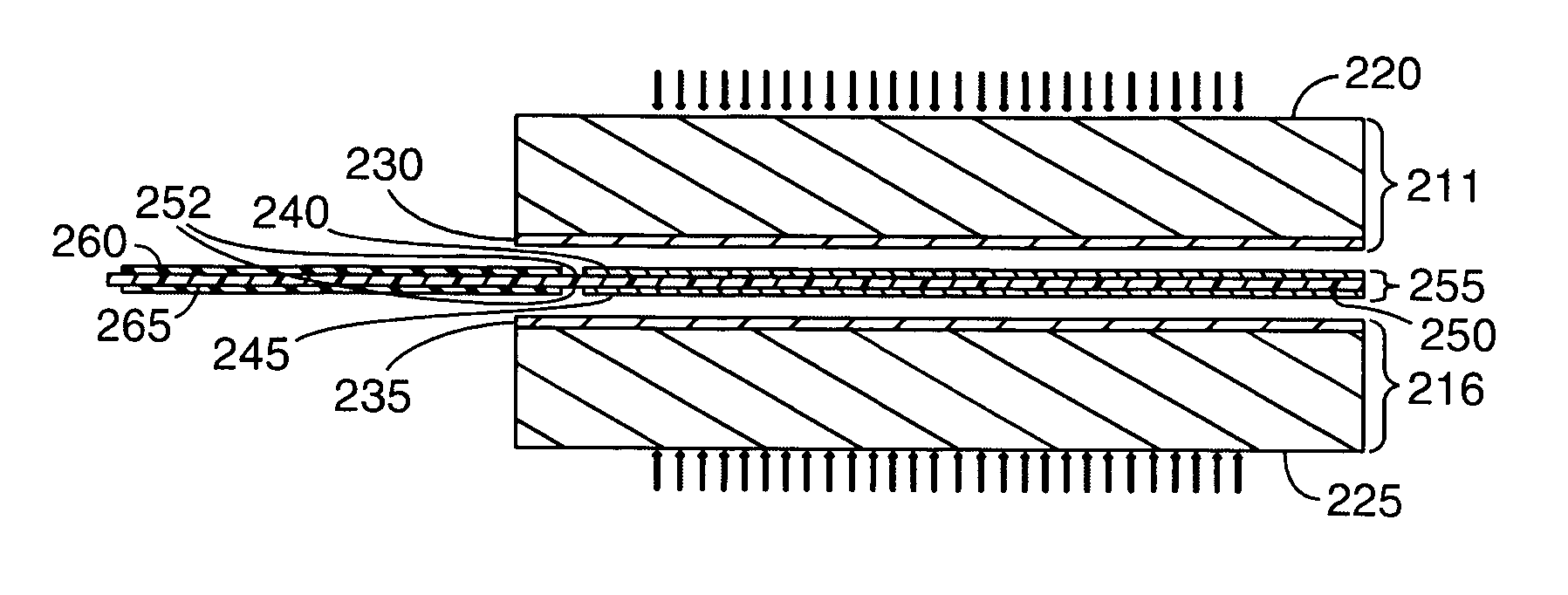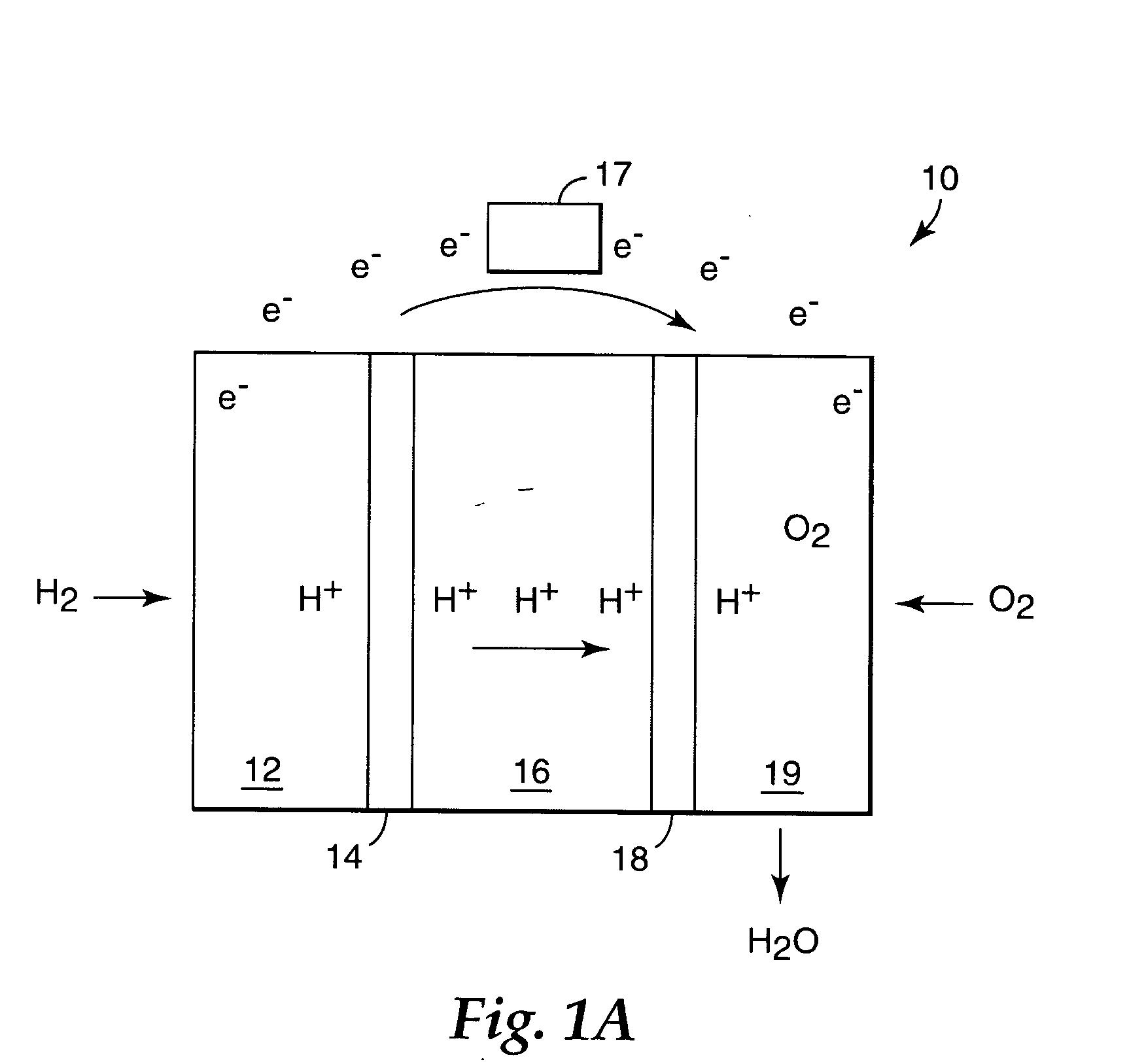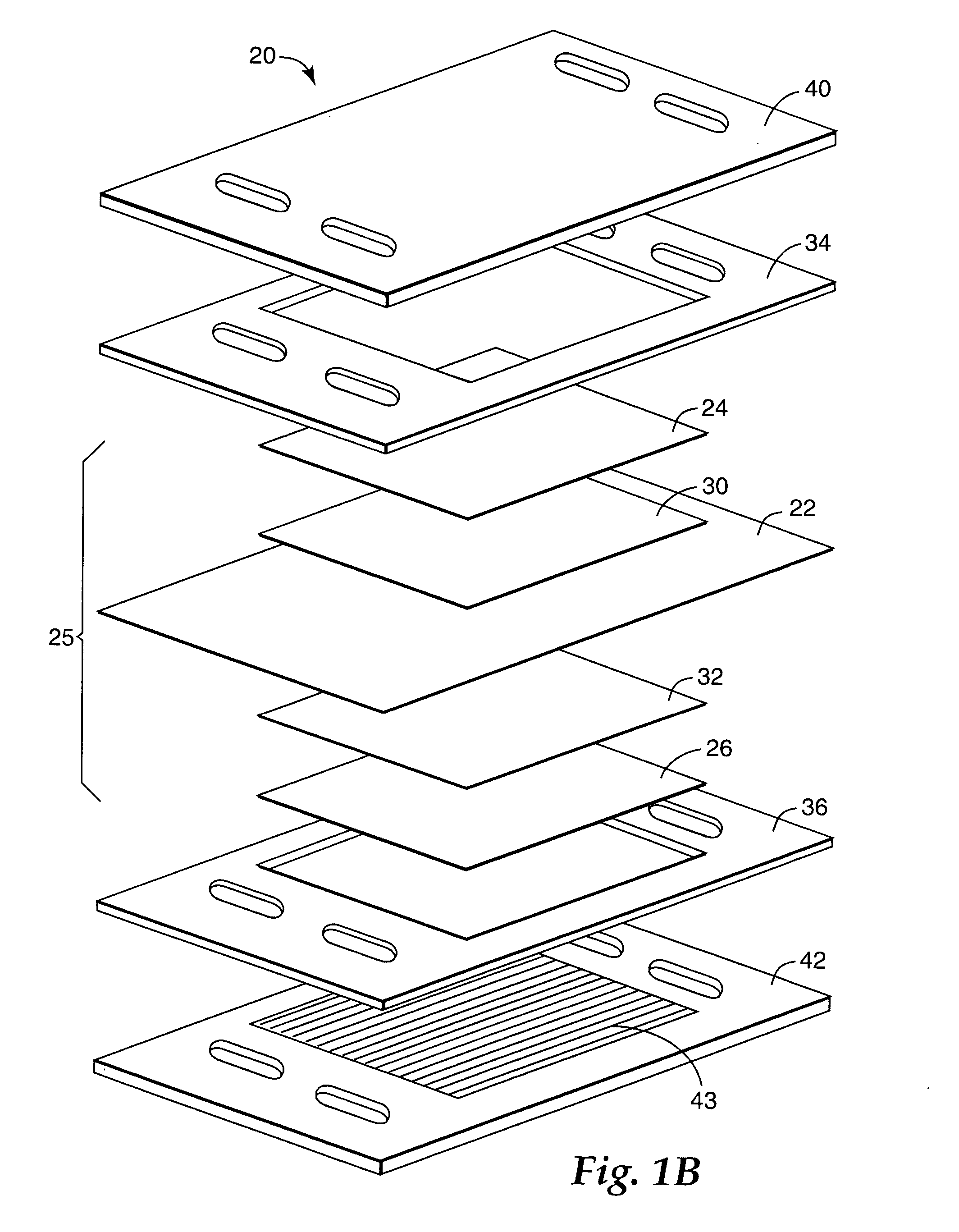Curable subgasket for a membrane electrode assembly
a membrane electrode and subgasket technology, applied in the field of fuel cells, can solve the problems of gas leakage, time-consuming, and inability to adapt to mass production, and achieve the effects of reducing the cost of fuel cells
- Summary
- Abstract
- Description
- Claims
- Application Information
AI Technical Summary
Benefits of technology
Problems solved by technology
Method used
Image
Examples
example 1
[0146] A UV curable dispersion mixture was prepared comprising 10 parts poly butadiene dimethacrylate oligomer (available under the trade designation “CN301” from Sartomer, Exton, Pa.) and 3 parts 1,6-hexanediol diacrylate (available under the trade designation “SR238” from Sartomer, Exton, Pa. 19341). Around 5% by weight of an α-hydroxy-acetophenone type photoinitiator (available under the trade designation SR1129 from Sartomer, Exton, Pa.) was used. This dispersion had a viscosity of around 1000 cps. Cast Nafion® 1100 membrane 1.1 mil in thickness was peeled off the carrier liner in the first step. To facilitate handling of the thin membrane, sections were taped onto a polyethyleneterepthalate (PET) carrier web that was threaded up on a screen printer. Dispersion was applied to said membrane using a patterned Gallus type screen. Screen mesh with 240 openings per inch was used to deposit a protective film of ˜1 mil thick on each side of the membrane. After each coating layer was ap...
example 2
[0147] The dispersion mixture described in Example 1 above was printed onto membrane while the membrane was still attached to its PET carrier liner. Cast Nafion® 1100 membrane 1.1 mils thick on PET liner 3 mils thick, was threaded up from unwind to windup on a TELSTAR (Burnsville, Minn.) screen printing machine. The UV curable dispersion mixture was deposited on the PEM to a thickness of approximately 1 mil. The dispersion was cured with a D type bulb as in example 1. The membrane was then peeled off the liner. The resulting membrane had a frame of protective material on one side, applied around a window opening that was uncoated
example 3
[0148] Samples of a UV protective varnish (Trimethylolpropane Triacrylate Ester) were obtained from Northern Coatings (Menominee, Mich.). Using the method of Example 2, the UV varnish was applied to a thickness of 2 mils onto the membrane. The dispersion was cured with a D type bulb as in example 1. The membrane was then peeled off the liner. The resulting membrane had a frame of protective material applied around a window opening that was uncoated. Although the protected membrane was significantly more resistant to stretching and deformation when tested by hand, the coating delaminated when the membrane was exposed to boiling water.
PUM
| Property | Measurement | Unit |
|---|---|---|
| thickness | aaaaa | aaaaa |
| thickness | aaaaa | aaaaa |
| thickness | aaaaa | aaaaa |
Abstract
Description
Claims
Application Information
 Login to View More
Login to View More - R&D
- Intellectual Property
- Life Sciences
- Materials
- Tech Scout
- Unparalleled Data Quality
- Higher Quality Content
- 60% Fewer Hallucinations
Browse by: Latest US Patents, China's latest patents, Technical Efficacy Thesaurus, Application Domain, Technology Topic, Popular Technical Reports.
© 2025 PatSnap. All rights reserved.Legal|Privacy policy|Modern Slavery Act Transparency Statement|Sitemap|About US| Contact US: help@patsnap.com



